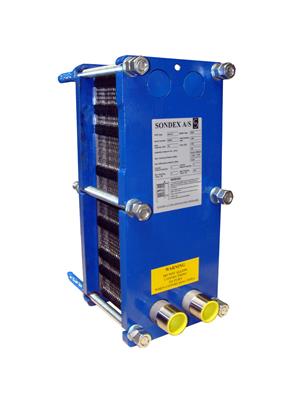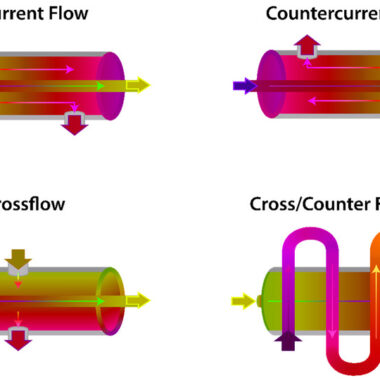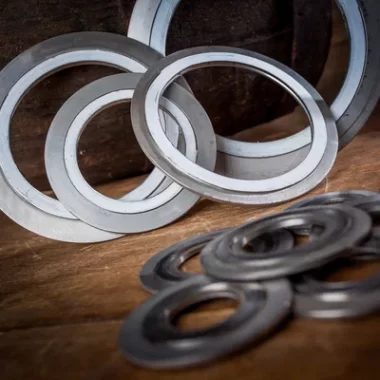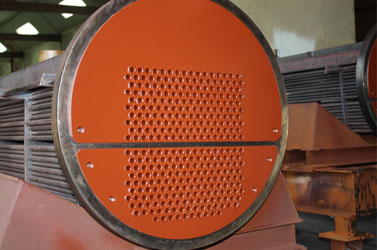Double Wall Heat Exchangers
Introduction
Double Wall Heat Exchangers are specialized thermal devices designed to enhance safety by providing an additional barrier between two fluid streams. Unlike standard heat exchangers, which use a single wall to separate fluids, double-wall heat exchangers feature two layers of tubing or wall material. This dual-wall construction is especially valuable in applications where preventing fluid cross-contamination is critical, such as in industries handling toxic, corrosive, or hazardous substances. In the event of a leak, the double-wall design traps the fluid between the two layers, preventing it from mixing with the other fluid stream and allowing for early leak detection. This added layer of protection makes double-wall heat exchangers an ideal choice for environments that demand stringent safety standards, ensuring operational integrity and reducing the risk of accidents.
- Chemical Processing Plants: In chemical plants, double-wall heat exchangers are essential to separate toxic or reactive chemicals from cooling fluids. The dual-wall design provides an added barrier, reducing the risk of cross-contamination that could lead to dangerous chemical reactions or emissions.
- Nuclear Facilities: Double-wall heat exchangers ensure the safe transfer of radioactive fluids by providing a secondary containment layer. This additional layer of protection is crucial for avoiding leaks that could result in radiation exposure and contamination.
- Petroleum and Gas Industry: In the oil and gas sector, these heat exchangers are used to cool hazardous fluids like hydrocarbons. The double-wall design prevents the risk of oil leaks that could ignite upon exposure to heat or oxygen, enhancing safety in explosive environments.
- Pharmaceuticals and Biotechnology: In industries where purity is essential, double-wall heat exchangers prevent contamination of clean fluids. They are often used for heating or cooling processes where even minimal leaks could lead to significant quality issues or safety hazards.
- Food and Beverage Industry: In processing applications involving hazardous cleaning or sterilizing agents, double-wall heat exchanger keep potentially harmful chemicals from contaminating food products. This is particularly valuable in systems that require regular cleaning and sanitation with strong chemicals.
- Water Treatment Facilities: In water treatment, especially in handling wastewater with hazardous chemicals or pollutants, double-wall heat exchanger prevent cross-contamination between the treatment fluids and clean water, ensuring environmental safety and preventing accidental discharge of toxins.
- Battery Manufacturing and Recycling: Double-wall heat exchanger are crucial in battery plants where lithium, sulfuric acid, and other reactive chemicals are used. The dual-barrier design protects cooling systems from exposure to these aggressive substances, which could lead to fires or toxic releases.
- Marine and Offshore Platforms: On oil rigs and marine platforms, double-wall heat exchangers are used to prevent leaks of hazardous fluids into the ocean. The added barrier ensures compliance with environmental regulations, protecting marine ecosystems from chemical contamination.
- Electronics and Semiconductor Industry: In semiconductor manufacturing, where ultra-pure fluids and hazardous chemicals like hydrofluoric acid are used, double-wall heat exchanger maintain separation between coolant and processing chemicals, preventing contamination and ensuring product quality.
- Industrial Refrigeration with Ammonia: In large refrigeration systems, where ammonia—a toxic refrigerant—is used, double-wall heat exchangers prevent ammonia leaks into other fluids. This helps avoid exposure to harmful fumes and ensures a safer working environment.
- Thermal Energy Storage Systems: In systems storing hazardous thermal fluids, double-wall heat exchangers provide an added layer of safety, ensuring that stored heat is transferred without the risk of fluid leaks, which could lead to fires or explosions in high-temperature applications.
- Power Generation and Geothermal Plants: In geothermal and power generation facilities, double-wall heat exchanger are used to handle hot, pressurized fluids, often mixed with corrosive elements. The double-wall design enhances durability and prevents cross-contamination with other plant fluids.
- Aerospace and Defense Manufacturing: In aerospace and defense, double-wall heat exchanger handle cooling fluids used in manufacturing high-precision components. The extra barrier ensures fluids containing contaminants or solvents don’t mix, preventing defects and ensuring process safety.
- Automotive Industry in Hazardous Coatings: In automotive manufacturing, particularly in painting and coating processes, double-wall heat exchanger prevent toxic solvents and coatings from mixing with water or coolant lines, safeguarding workers and ensuring process purity.
- Pharmaceutical Sterilization Processes: During sterilization and pasteurization in pharmaceuticals, double-wall heat exchanger keep sterilizing agents from contaminating the product. This protects against biological hazards and ensures consistent product safety and quality.
- Industrial Gas Processing: For industries handling hazardous gases (like hydrogen, ammonia, or chlorine), double-wall heat exchanger are used to cool or heat these gases without the risk of leaks. The secondary wall provides added containment, minimizing the risk of toxic or flammable gas exposure.
Conclusion
double-wall heat exchangers play an essential role in maintaining safety and reliability in industries where contamination and leak prevention are paramount. Their dual-layer design not only protects against accidental fluid mixing but also provides early detection of potential leaks, allowing for timely maintenance and reducing environmental risks. By offering an added layer of security, double-wall heat exchangers ensure compliance with safety standards and support efficient operations in high-risk environments. Their value extends across sectors such as chemical processing, pharmaceuticals, nuclear facilities, and food production, making them a crucial component for any application requiring robust and reliable thermal management in hazardous conditions.






